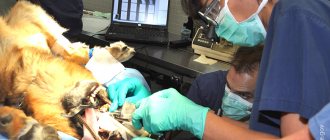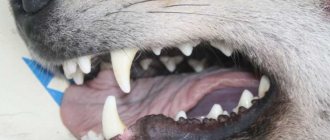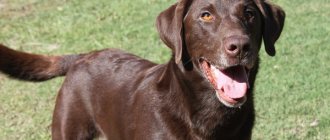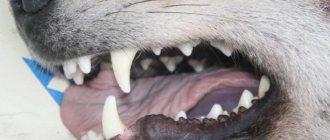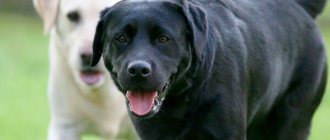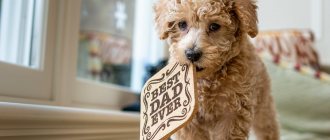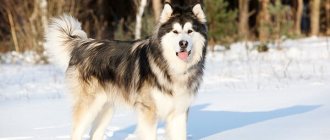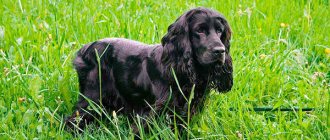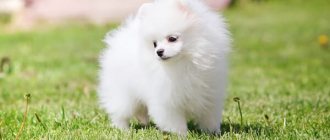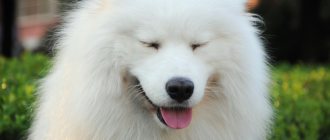The health of a dachshund’s teeth is a special and extremely serious topic of conversation, since the condition of a dog’s teeth affects the pet’s overall health: appearance, appetite, mobility, and emotional state. Do dogs lose teeth? Of course this is happening. After all, a dog is a living creature just like a person. Dogs are also susceptible to various diseases and ailments. The dog owner must establish close monitoring of the condition of his pet’s teeth: regularly brush his teeth (special brushes and pastes are sold in pet stores for this procedure), and show the dog to a veterinarian. It is not necessary to take her often to be examined by a specialist. The main thing is just not to forget about the need to do this periodically.
Dog's dental system
For any breed of dog, the dental system plays an extremely important role in the body, since the quality of life and health of the pet depends on it. These are very durable bone tissue formations that perform important functions:
- attacks;
- protection;
- capture;
- retention;
- tearing and crushing food;
- killing prey.
The dental chart is written with a special formula, which indicates the number of dental units of an adult animal on one half of each jaw.
On the top there is:
- 3 incisors;
- 1 fang;
- 4 premolars;
- 2 molars.
On the bottom:
- 3 incisors;
- 1 fang;
- 4 premolars;
- 3 molars.
The dental formula is written in alphabetic and numerical combinations, describing the location of the teeth in the animal’s mouth. The tooth consists of an upper crown that stands out above the gum. Its slightly narrowed neck is tightly covered by the gum. The dental root hidden in the alveolus has a small hole in the upper part leading into the cavity of the dental unit. Inside it is a soft pulp in which blood vessels and nerves are located. The main part consists of dentin. The outside is covered with hard tooth enamel. The tooth is located on the periosteum, which is called periodontium.
Photo: wikimedia.org Dog teeth: 1, 2, 3 - incisors, 4 - canines, 5 - premolars, 6 - molars
Types of bite and its disorders
Every dog owner needs to know the types of bites and deviations from the norm. It is worth noting that for some breeds, deviations are due to genetic characteristics, and they are specified in the standards.
- Correct - the teeth of the lower jaw are behind the upper jaw. There is not much distance between them.
- Straight is normal for certain breeds. All incisors are connected along one line.
- Underbite is a deviation. There is a large gap between the incisors.
- Snacking is also standard for some breeds. The lower incisors “overlap” the upper ones.
Therefore, if you have any alarming symptoms, you should contact your veterinarian.
Puppy at the veterinarian's appointment
How many teeth does a dog have normally?
An ordinary adult dog has a normal set of 42 teeth. Sometimes there is a deficiency, which is called oligodonia, or an excess of teeth, which is called polyodontia, or hyperdontia. Sometimes some dogs have not 6, but 7 or 8 incisors between the canines. This occurs due to the fact that the wide space between the canines is filled not by increasing the size of the incisors, but by increasing their number.
It is always normal for a dog to have carnassial teeth. These are very strong dental units with which their owners are able to grind bones. All predators have them. With their help, animals cut meat. These are modified upper premolars and lower molars. They grow in dogs in the first year of their life, changing from dairy to permanent during puppyhood.
In puppies
Puppies are born toothless. At the age of three weeks, their baby teeth appear:
- incisors grow from the fourth to the sixth week;
- fangs grow from the third to the fifth week;
- premolars or false canines appear in the fifth or sixth week.
At the age of two months, puppies should have 28 teeth - 14 each on the upper and lower jaws. When your dog is teething, you need to know how to help him during this period. The owner must purchase special toys on which the puppy will scratch his gums. Thanks to this, he will not spoil the owner's things.
A puppy's molars immediately grow permanent at the age of four months. They are not milky, like premolars. When dogs change teeth from milk to permanent, the owner needs to create special conditions for the pet so that the pet survives this period safely. You need to know at what age your dog's teeth change in order to control this process. You should inspect your pet's jaw, checking the sequence of appearance of permanent teeth.
Permanent teeth gradually replace baby teeth, which fall out. First the incisors change, and then the fangs. False roots change simultaneously with the canines or a little later. By seven months the animal should have 42 teeth. If there is a violation of the sequence of eruption of permanent teeth, you should immediately contact a veterinarian. Problems with changing teeth can be a symptom of the development of rickets in a puppy, as a result of which the pet can become disabled.
During the period of teeth change, the dog’s immunity decreases, so you need to monitor its health:
- feed a nutritious diet rich in protein and calcium;
- do not allow hypothermia outside;
- do not walk with the puppy where there are many animals from which he can become infected.
After changing teeth, it is necessary to get repeated vaccinations.
In adult dogs
After seven months the dog should have no baby teeth. The large dog has 42 teeth: 20 on the upper jaw and 22 on the lower jaw. You can tell a dog's age by its teeth, provided it has had good maintenance and quality care. To determine age, the degree of sharpening of the incisors is taken into account:
- the lower ones in front wear down a little already at 1.5 years;
- lower middle from bottom to - 2.5 years;
- front upper - by 3.5 years;
- middle upper - by 4.5 years;
- extreme lower ones - by 5.5 years;
- extreme upper ones - by 6 years.
The health and life expectancy of your pet directly depends on the condition of the dental system.
Photo: pixabay.com
Problems
For the purity of the breed, it is important not only to preserve external characteristics. When allowing breeding, experts also pay attention to how many teeth the dog has. A change in their number that is not associated with natural replacement can also be caused by genetic factors.
Deficient teeth (oligodontia) in dogs usually manifests as missing first or second incisors. This feature is found in shepherd dogs. Dachshunds may be missing their last couple of molars.
An extra set (polydontia) appears in small breeds of terriers, dachshunds and spaniels. It may be false due to the remaining primary incisors and premolars, or real. In this case, usually one, or less often two, teeth are superfluous. Such pathologies arise when different breeds of dogs are crossed and are manifested by genetic mutations.
Number of teeth by breed
The number of teeth may vary between breeds. Large dogs such as Labrador, German Shepherd or Rottweiler should have 42 teeth in their mouth. Deviation from standards is considered a vice.
In medium and small breeds, the number of teeth can range from 36 to 40. Sometimes there are individuals with 42 teeth in the mouth among spaniels and dachshunds, which are among the most common representatives of medium and small dogs. It will not be possible to find a terrier with so many teeth due to the fact that as a result of the selection of this breed, the structure of the jaws of such a dog has significantly changed, as a result of which the intercanine space has narrowed.
Here is a table of the number of teeth by breed:
| Breed | Number of teeth |
| Yorkshire Terrier | 40 |
| Chihuahua | 38-40 |
| Toy Terrier | 40 |
| German Shepherd | 42 |
| Retriever and Labrador | 42 |
| Pug | 38-40 |
| French Bulldog | 40 |
| Welsh Corgi | 38-40 |
| Laika | 42 |
| Husky | 42 |
| Cocker Spaniel | 42 |
| Collie | 42 |
| Brussels griffin | 40 |
| Bloodhound | 42 |
| Irish black spaniel | 40-42 |
| Australian heeler | 42 |
| Collie | 42 |
| American Hairless Spaniel | 40 |
| Chinese Crested Dog | 40 |
| Shih Tzu | 38-40 |
| Bull Terrier | 40-42 |
| Doberman | 42 |
| English bulldog | 40-42 |
| Newfoundland | 42 |
| Miniature Pinscher | 38-40 |
| Cane Corso | 42 |
| Tibetan Terrier | 42 |
| Greater Swiss Mountain Dog | 42 |
| Dogue de Bordeaux | 42 |
| Toy poodle | 40 |
| Greyhound | 42 |
| Samoyed dog | 40-42 |
| Siberian Husky | 42 |
| Beagle | 40 |
| Pomeranian Spitz | 38-40 |
Caries
Children at an early age are characterized by the so-called “bottle caries”, which develops on several teeth at once due to the habit of falling asleep with a bottle of sweet nutritional mixture. Such food is to the taste not only of children, but also of microorganisms that rapidly multiply in the oral cavity in the presence of a carbohydrate substrate.
The hard dental tissues of toddlers are poorly mineralized, so when the surface layers of enamel are destroyed, they are quickly saturated with food coloring, acquiring a dark and sometimes even black color. Often, with a sufficient content of calcium salts in food, the carious process is stopped, the dentin becomes denser, but the dark color of the eroded surface remains.
With a lack of calcium, the carious process covers a significant area of the tooth surface, leading to its rapid destruction. If it is not possible to close large defects with a filling, then the dentist stops the destructive phenomenon using the silvering method - the enamel is treated with silver nitrate, which, when combined with protein molecules, forms an antimicrobial protective film. The disadvantage of this method is the blackening of the damaged areas, so the method is used on the front teeth only in young children.
If the number of teeth is not normal
Healthy teeth are the key to a dog’s life expectancy. With normal animal care, they can wear off, but will not fall out. A healthy dog's teeth are more durable and hard. If an animal begins to have problems with its teeth, it means it is sick.
It is difficult for the owner himself to determine why the dog’s teeth are falling out; only a veterinarian can tell you what to do in such a situation after examination and checking the tests. The sooner the animal owner contacts specialists, the greater the chance of eliminating the dangerous symptoms of diseases expressed in the destruction and loss of permanent teeth.
Tooth loss can be the result of an injury received while playing with other animals or the owner, as well as in a number of other cases.
Photo: wikimedia.org
The difference between a boy and a girl, how to choose
To distinguish a girl dachshund from a boy, you need to take a one-month-old puppy in your arms and examine its belly. The female has a navel and nipples; the male also has a genital organ. It must be remembered that this is difficult to do in a newborn baby, since the genital organ is poorly expressed.
When choosing a puppy, follow several recommendations:
- The eyes of a healthy taxi are clear, most often brown.
- Scissor bite.
- There is a brand on the stomach or right ear.
- The tail is without kinks.
- Gums and tongue are pink.
- The nose and claws are black or brown.
- The black color has tan.
- The puppy is not fat, but well-fed.
- He behaves confidently and is not afraid of any noise.
Dog dental care
Knowing how many teeth on top and bottom the dog has in its mouth, the owner will be able to receive more information about his pet and properly care for him. Teeth, like a dog's coat, need regular cleaning.
In breeds with a regular bite, teeth cleaning occurs naturally while eating solid food.
Dog breeds with malocclusion require special care for their mouths after eating. In addition to special means of protection and care, you need to monitor your pet’s diet and what he likes to play with.
Balanced food is a source of nutrients for the animal. It does not allow pathogenic microflora to develop in the mouth by maintaining the animal’s immune system in good condition. You should also prevent your dog from chewing on stones or very hard objects that he uses to play on.
Possible complications
When the process of changing teeth begins, the owner must carefully monitor the well-being of his pet and the condition of his oral cavity. Experienced dog lovers advise showing the puppy to a veterinarian. This period may be accompanied by complications.
Gum inflammation
It may occur for the following reasons:
- the appearance of too large teeth;
- “hoods” of gums in which food debris accumulates, which triggers the process of inflammation;
- incorrect diet.
If the inflammatory process is too severe, then the puppy is given procedures to maintain oral hygiene or given special medications.
Delayed tooth change
In this case, the molars appear before the mammary ones fall out. This can cause malocclusion and crooked teeth. Also, the roots of the dairy plants begin to rot. The problem can only be solved surgically.
Diarrhea
Diarrhea often accompanies changing teeth and usually goes away without intervention. The owner should monitor for development of dehydration. The smaller the puppy, the faster he loses water.
Attention! If your pet develops a fever or vomiting as a result of diarrhea, it should be taken to the vet immediately.
The puppy may be lethargic and this is worth paying attention to.
Smell from the mouth
Most often this is a sign of rotting. The causes of unpleasant odor are various:
- it may be caused by food debris;
- the appearance of pathogenic microflora in the mouth;
- disruptions in the gastrointestinal tract.
If, during an external examination of the mouth, the owner did not find anything strange, then you need to consult a specialist. Based on the data obtained, he will be able to determine the exact cause of its occurrence.
Poor appetite
This is a completely normal reaction of the body to discomfort. You should be concerned if the puppy refuses not only food, but also drink. The dog eats poorly due to discomfort, so you can make it easier for him to eat by switching him to liquid or ground food.
Attention! If lack of appetite is accompanied by fever, vomiting, diarrhea, then you should consult a specialist.
Briefly about the main thing
- You need to take care of your dog's teeth from puppyhood.
- During the change of teeth, the puppy needs to be looked after especially carefully.
- An adult large breed dog should have 42 teeth. Shortage or excess is considered a deviation. Representatives of small and medium breeds are allowed a smaller number of teeth, which is not considered a defect.
- An adult dog's teeth should be looked after regularly by purchasing special bones to remove plaque from the teeth. Also, a number of breeds need to clean their jaws with special toothpastes created for dogs.
If you have questions or have an opinion on this topic, leave a comment after reading the article.
What can you chew to relieve itchy gums?
In nature, puppies chew branches and sticks for this purpose. If possible, you can bring them home. There are also a number of things that will help solve this problem:
- toys made of durable material (it is advisable to change them after a few days so that the puppy does not lose interest in them);
- teethers;
- healthy treats;
- large articular bones;
- vegetables and fruits;
- wood, preferable to fruit trees.
If the puppy does not have things that he can chew, then he will begin to damage furniture, shoes and other valuables. This can also be made part of training, teaching your pet to chew on certain objects.
Feeding
You should feed him 2 times a day with dry or natural food. The second feeding should be done after a walk. If you feed your dog before a walk and he has to run around with a full belly, he will feel bad, and there is also a risk of volvulus.
On average, an adult dachshund should be given food per day at the rate of 40 g per 1 kg of dog weight. The main thing is not to overfeed. Dachshunds love to eat, and without exercise, especially in winter, they quickly gain weight.
The topic is covered more fully in the article “Feeding the Dachshund”
